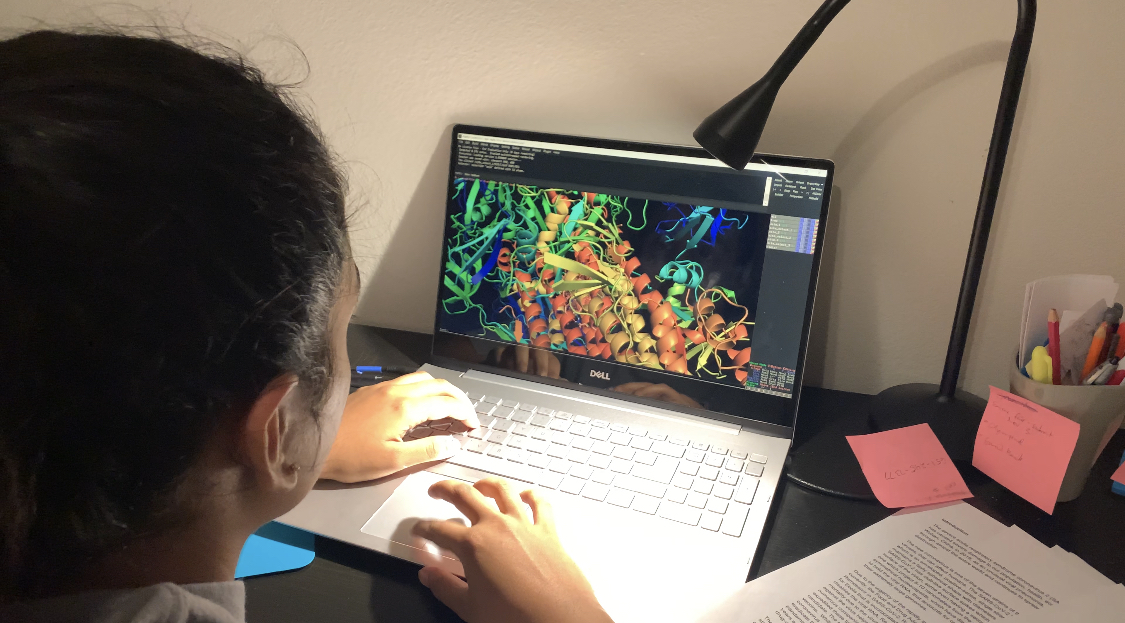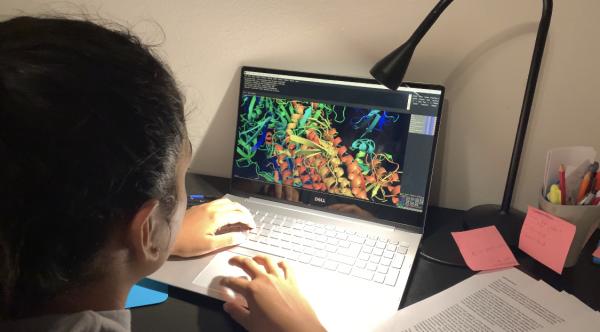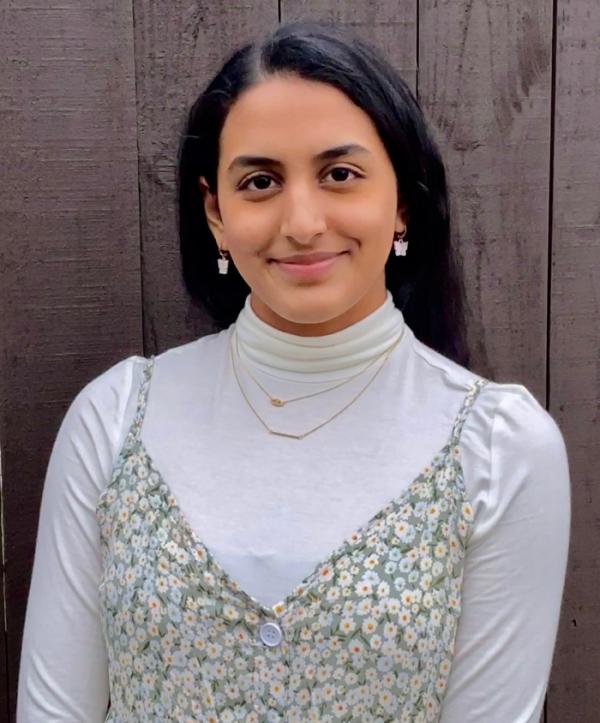KID REPORTERS’ NOTEBOOK
A 14-Year-Old Student Wins a Top Science Award


Anika Cherbrolu, a 14-year-old student from Texas, discovered a molecule that may help in the fight against COVID-19.
Anika Cherbrolu, 14, from Frisco, Texas, won this year’s 3M Young Scientist Challenge. She bested nine other finalists, as well as hundreds of middle-grade students who submitted ideas for tackling global problems.
Anika was presented with the top award in the prestigious science competition on October 14. She won $25,000 in prize money and an exclusive mentorship with a 3M scientist. The company focuses on worker safety, health care, and consumer goods.
Anika was recognized for her work on a possible breakthrough in the treatment of COVID-19, the contagious disease caused by the coronavirus. She discovered a molecule that connects with proteins on SARS-CoV-2, the scientific name for the disease. This powerful molecule could block the virus from entering the body’s cells and spreading. It also might strengthen possible remedies for COVID-19.
The public was given the opportunity to vote on the finalists for the Improving Lives Award, which Anika also won. Some of her prize money, she said, will fund a nonprofit organization she has started called AcademyAid. She hopes to help “underrepresented students receive a well-rounded education by encouraging STEM and providing supplies to underfunded schools in India,” where her family has roots.
After learning of Anika’s discovery, I asked her questions about her research via email. Here are her responses, which have been lightly edited for brevity and clarity.
How would you explain your scientific discovery to our young readers?
I discovered a molecule that can attach to the spike protein on the SARS-CoV-2 virus and potentially change its shape and function. The spike protein is the round ball you may have seen pictures of on TV with spikes coming off of it. This is how the protein attaches to healthy cells once it enters your body and spreads the virus. If you change the shape of the spike protein, you can prevent the virus from being able to grab onto human cells and reduce or treat further infection in a person’s body.
Who or what inspired you to work on this particular project?
My grandfather was a chemistry professor. From the time I was very young, he instilled in me a passion for science. He taught me about the periodic table and would do fun science experiments with me.
For this particular project, however, I started by studying the 1918 pandemic for a school project a few years ago and became fascinated with viruses and drug discoveries. During my research, I learned about the in-silico methodology [which uses a computational approach]. I was amazed at how we could use computational methods to identify and develop potential drug-like molecules to combat diseases.
Last year, I tried using this methodology to identify a lead compound which could bind to the hemagglutinin protein [which causes blood to clump together] of the influenza virus. I was working on this project when COVID-19 hit. After spending so much time researching pandemics, viruses, and drug discoveries, it was crazy to think that I was actually living through something like this.
Because of the severity of the COVID-19 pandemic and the drastic impact it had on the world in less than a year, I, with the support of my mentor, Dr. Mahfuza Ali from 3M, decided to change the direction of my initial project to focus on how to potentially target the spike protein of the SARS-CoV-2 virus.

Anika is using some of her prize money to encourage aspiring young scientists in India.
What did you learn from your mentor?
I was paired with Dr. Ali, a corporate scientist from 3M’s materials and resource division. Through my collaboration with her, I was able to gain expert scientific advice and access to many advanced resources, including the high-performance computing server that helped me not only expedite but greatly improve my research project. Dr. Ali has been so supportive of me throughout this entire competition. She mentored me all summer.
What’s next for you?
Research shows that too many young people have been discouraged from pursuing science. A recent study by 3M found that members of Gen Z were three times more likely than Baby Boomers to report being discouraged as K-12 students from pursuing science. To encourage more young scientists, I’ve established a nonprofit organization, AcademyAid, which strives to help underrepresented students receive a well-rounded education by encouraging STEM and providing supplies to underfunded schools in India. I think we can always do more to encourage kids to get involved in STEM. I plan to use part of the money I won from the competition to further fund and build AcademyAid.
What advice do you have for other young scientists?
Never stop asking questions, and always have trust and belief in yourself. Make sure to jump at every opportunity you see with the best of your abilities. You never know where you could end up.
